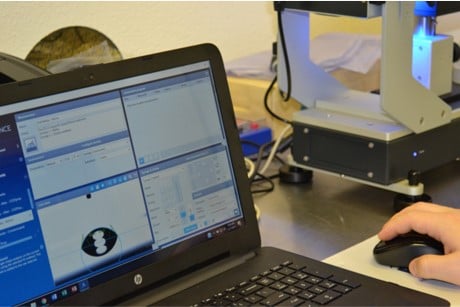Wettability
CO2 Improves Surface Wettability
A manufactured product may require component surfaces to provide fast and uniform spreading and contact of applied (liquids) adhesives, coatings, paints, sealants, underfills, or molten metals. The ability of surface to be wetted by another substance is termed wettability.
Wetting is the ability of a liquid to maintain contact with a solid surface, resulting from intermolecular interactions when the two materials are brought together. The degree of wetting (wettability) is determined by a force balance between adhesive and cohesive forces. As such, wettability is a measure of the nature and extent of the differences (or similarities) between the surface tension of a wetting agent and the surface free energy of the wetted surface. Adhesive forces between a liquid adherend and solid surface cause a liquid drop to spread across the surface. Cohesive forces within the liquid adherend cause a drop to ball up and avoid contact with the surface. Surface free energy correlates with dispersive and polar liquid solubility parameters and solid surface cohesion parameters, where optimal wettability conditions are achieved according to the principles “like-dissolves-like” and “like-seeks-like”. Wettability is typically determined using Drop Shape Analysis (DSA) techniques which measure the contact angle a liquid drop on a solid surface or a pendant drop shape suspended in air using a sessile drop – a microscopic amount of test liquid, typically only a few microliters, attached to a surface and which is not significantly perturbed by gravitational force. The surface tension of the fluid or surface free energy of the surface is calculated using various accepted models. DSA is particularly useful in CO2-based surface modification processes and is discussed in more detail in Chapter 4 of this guidebook.

CO2 processing technology provides a number of state-of-the-art methods and processes to increase wettability. For example, advanced Particle-Plasma™ hybrid spray treatment processes provide simultaneous precision cleaning and surface modification using a combination of CO2 composite spray and atmospheric plasma.





